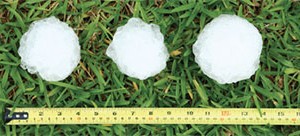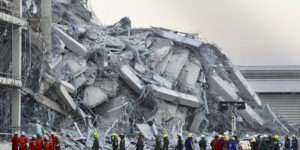Australia’s bushfire season has months to run and could easily surpass the most costly fire season, 2009’s Black Saturday fires in Victoria, which had a price tag of an estimated A$4.4 billion (US$3 billion), according to Moody’s Analytics, in a report on the bushfires.
Moody’s Analytics (Moody’s economic research arm) and Moody’s Investors Service (the ratings agency), joined other firms that recently issued comments about Australia’s bushfires. A summary of these reports from Moody’s, RMS, AIR Worldwide, Suncorp Group, Insurance Australia Group (IAG), Allianz Australia, QBE Insurance, and the Insurance Council of Australia (ICA) follows here:
Moody’s
Moody’s Investors Service said Australian property and casualty (P&C) insurers’ losses from the bushfires will be manageable, given their strong underwriting performance, high level of reserve adequacy and capital, and strong reinsurance protection.
“Although we expect claims to continue to rise, dampening the sector’s profits, they are likely to be manageable as the industry has a long history of strong underwriting discipline, which has kept its combined operating ratio consistently below 100% over the last 10 years,” says Frank Mirenzi, a Moody’s vice president and senior credit officer.
The only exception to this was 2011, said Moody’s, when the industry’s combined ratio was 103% and natural catastrophe losses totaled about A$4.5 billion (US$3.1 billion) due to three large loss events. Final losses from the ongoing bushfires are unlikely to be significantly greater than 2011, said the ratings agency.
The Insurance Council of Australia on Jan. 10 reported that combined bushfire catastrophe losses since September 2019 now stand at A$995 million (US$685 million) from a total of 11,272 claims. Included in that total are the 10,550 claims from the November-January bushfires in New South Wales, Victoria, South Australia and Queensland which have cost insurers an estimated A$939 million (US$646.4 million).
“Despite the manageable impact for insurers, the catastrophic fires highlight that the P&C insurance industry is at the forefront of environmental risk. The industry is exposed to the economic consequences of climate change, primarily through the unpredictable effect of climate change on the frequency and severity of weather-related catastrophic events, such as hurricanes, floods, convective storms, drought and wildfires,” Mirenzi continued.
Moody’s expected Suncorp Group, through its subsidiary AAI Ltd., and Insurance Australia Group (IAG) to receive the largest sum of gross claims because of their significant market share in home and motor insurance.
However, QBE Insurance Group Ltd. and international insurers with large Australian operations such as Allianz SE and Zurich Insurance Co. Ltd. will also be affected, Moody’s said.
In a separate report, Moody’s Analytics discussed the conditions that are exacerbating the bushfires, as well as the economic effects of the fires.
Australia is in the midst of its worst drought in decades, with some regions experiencing very dry conditions for the past three years, which has fueled bushfires across the eastern states since November, explained Moody’s. While Australia is prone to drought and bushfires, Moody’s indicated that the latest fires have been more severe than usual and have started earlier than normal. (The Moody’s Analytics report was authored by Katrina Ell, senior APAC economist.)
Previously, bushfires in Australia have not tended to have an aggregate impact on the overall economy, but instead caused “severe localized impacts,” continued the report.
However, the risk of broader macroeconomic spillovers this season are high “given the scale of the fires as well as the fact that it is still early in the bushfire season and the existing fires are yet to be contained.” Moody’s Analytics pointed to severe direct economic costs that include damage to agriculture, tourism, household spending and worker productivity from enduring air pollution.
“Disruption is also another economic cost,” said Moody’s. “Many homes and businesses have had water and power supplies cut off in addition to significant road closures and evacuations. Meanwhile, financial services are damaged, particularly insurance companies and banking services with large exposure to regional communities.”
RMS
In its commentary released on Jan. 10, the Newark, Calif.-based modeling firm, RMS, questioned if the Australia bushfires represent “a new normal.” While bushfires are a regular occurrence in Australia, RMS said, the severity of this season has brought significant international media attention as the bushfires increasingly are “evaluated through the prism of climate change.”
There is increasing confidence that climate change has affected bushfire risk, said RMS, quoting a November 2019 report published by IAG, which cites a rise in the McArthur Forest Fire Danger Index (FFDI), used to monitor fire weather conditions. Between 1974 and 2015, the IAG report said, there have been significant FFDI increases at 42% of monitored sites, especially in southeast Australia. The report also points to continued increases in FFDI, a higher frequency of days with severe fire danger and reduced intervals between fire events, noted RMS.
RMS discussed the comparisons with California’s wildfires in 2017 and 2018 and how the size of the area that burned in Australia’s bushfires is many times larger than California. Indeed, the bushfires are affecting a vast area, but it is much more sparsely populated than the areas affected by California’s fires, said RMS, noting that losses of US$10 billion in one California season puts the bushfire losses into context.
However, one common theme for both countries “is the increasing level of construction in wildland urban interface (WUI) areas, building close to or within burnable vegetation, which puts more exposure in harm’s way and increases losses,” added the modeling firm.
“Containment is the priority as the season still has a couple of months to run, but as this season ends, similar to the California wildfires in 2017 and 2018, an assessment of whether there is a new baseline for the typical extent of a bushfire season, and how to understand this peril, will need to take place,” RMS affirmed.
AIR Worldwide
In a report issued on Jan. 8, Boston-based modeling firm, AIR Worldwide, said roughly 10.3 million hectares (25.5 million acres) have burned and more than 1,500 homes have been destroyed in hundreds of bushfires occurring across a vast area of the country. Most damage is reported in New South Wales – Australia’s most populous state – and Victoria, with additional losses occurring in South Australia, and Queensland. Bushfires are also active in Western Australia and Tasmania.
AIR said that prolonged, widespread smoke from the fires has led to hazardous air quality posing health risks, closing schools and disrupting travel for about a third of Australia’s population. Indeed, more than 100 roads remain closed across Victoria’s bushfire zones, while more than 400 kilometers of the Eyre Highway between Esperance and Caiguna – the only paved road linking Western and South Australia – is closed, AIR explained.
A state of emergency was declared for six areas in Victoria, and New South Wales declared a third 7-day state of emergency, added AIR.
Australia experienced the hottest and driest year on record in 2019, affirmed AIR, quoting the Australia Bureau of Meteorology (BOM). “Extreme heat and extreme drought conditions are key ingredients for bushfire that have been exacerbated by climate change over the last few decades,” the modeling firm went on to say.
Suncorp Group
Suncorp Group on Jan. 9 said it had received more than 2,600 bushfire-related claims since September 2019 with a total estimated cost of between A$315 million (US$216.2 million) to A$345 million (US$237 million).
“We fully recognize that these bushfires are particularly significant in terms of their duration; the geographic breadth of the fire zones; the sheer destruction of property; and the associated impacts on people’s lives, as well as local communities and economies,” said Suncorp Group CEO Steve Johnston in a statement.
“This recovery is going to take a long time – as one of Australia’s largest insurers we understand the role we need to play in that process. We are committed to continuing to do everything possible to help people and communities get back on their feet,” he added.
Suncorp said it has increased its donation to the bushfire relief effort to A$500,000 (US$343,110). Suncorp has already donated A$100,000 (US$68,622) to the Australian Red Cross’ Disaster Relief Fund and A$40,000 (US$27,448) to emergency services in New South Wales and Queensland. Suncorp also continues to double match employee donations with over $90,000 (US$61,760) contributed to bushfire relief agencies to date. The additional funds will be targeted at supporting local and regional community fundraising efforts.
Insurance Australia Group (IAG)
IAG on Jan. 3 issued an update about its net natural peril claim costs, inclusive of bushfire events. At the close of Jan. 2, 2020, IAG said it had received over 2,800 bushfire-related claims since the beginning of September 2019, with in excess of 1,500 of these lodged since the start of December 2019. The majority of these claims relate to residential properties, added IAG. (On Jan. 10, the company announced it had received more than 5,000 bushfire-related claims since the beginning of September and has finalized more than 20% of these claims to date.)
IAG said its perils estimate for the first half of 2020 includes three ongoing bushfire events which have been capped by reinsurance recoveries under its aggregate cover, following full erosion of the associated deductible. Overall bushfire events are anticipated to contribute more than A$160 million (US$110 million) of net claim costs in H1 2020, post-quota share.
Allianz Australia
Allianz announced on Jan. 7 it had received more than 1,040 claims since Nov. 8, valued at over A$115 million (US$79.2 million), with more losses in the pipeline.
Allianz has partnered with the Australian Red Cross to establish an employee Bushfire Appeal. Every dollar donated by its employees will be matched by the company to help provide psychological first aid and assist evacuees to get in touch with families and friends. More than A$50,000 (US$34,417) has been raised since November. With Allianz dollar-for-dollar matching, more than A$100,000 (US$68,833) has been raised for the Red Cross Disaster Relief & Recovery Fund.
QBE
QBE Insurance on Jan. 5 said it was contributing an additional A$400,000 (US$274,488) for bushfire relief (on top of A$100,000 pledged in November), supporting its disaster relief partners, Red Cross and Save the Children. (QBE hasn’t yet issued a claims report).
QBE said it also continues to match employee donations to the Red Cross bushfire appeal, on a dollar-for-dollar basis.
The “excess” is the amount a customer pays before the insurance cover takes over, also known as the deductible. “We’re waiving the excesses for individuals who are making bushfire-related claims for their personal insurance,” said a QBE representative. “This includes personal insurance claims for home buildings, contents, landlords, motor vehicles for private use and caravans.”
*This story ran previously in our sister publication Insurance Journal.





















 Better Results Ahead? Technology Improvements in Commercial Fleets
Better Results Ahead? Technology Improvements in Commercial Fleets  U.S. P/C Industry Combined Ratio Headed Back Up to 100: S&P Ratings
U.S. P/C Industry Combined Ratio Headed Back Up to 100: S&P Ratings  Despite Decline in Cyber Breaches, Middle Market Firms Must Remain Vigilant: Survey
Despite Decline in Cyber Breaches, Middle Market Firms Must Remain Vigilant: Survey  Bill Aims to Make Staged Accidents a Federal Crime
Bill Aims to Make Staged Accidents a Federal Crime 








